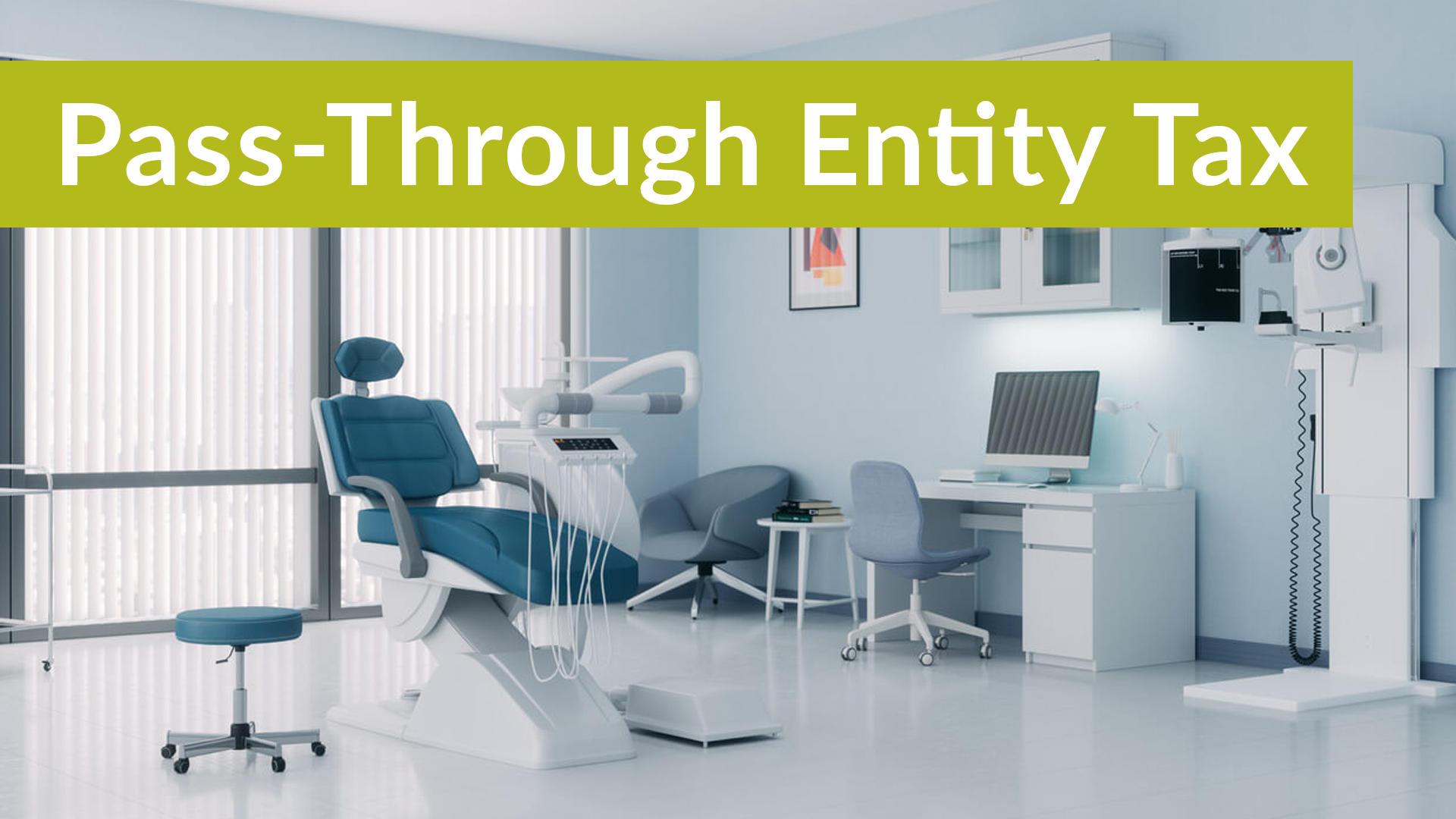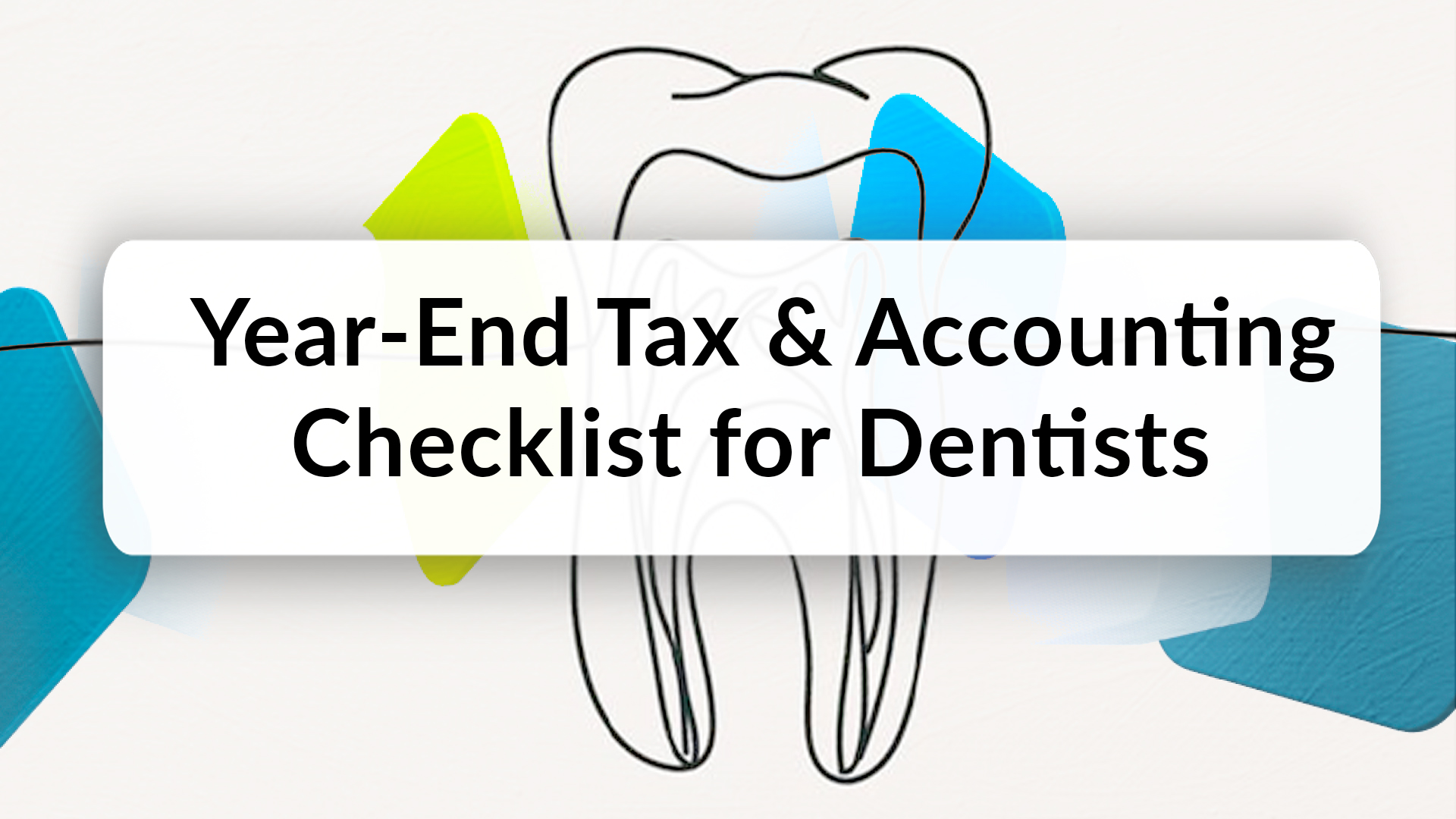If you’re a dentist who owns or co-owns a practice, especially one structured as a partnership or S corporation, you’ve likely heard about Pass-Through Entity (PTE) tax elections and nonresident withholding. These two tax concepts are often misunderstood, and sometimes used interchangeably, but they serve very different purposes.
In this article, we’ll clarify what each means, how they apply to dental practices, and why it’s important to understand the distinction especially as states continue to adjust their tax codes in response to federal changes.
What Is the Pass-Through Entity (PTE) Tax Credit?
The PTE tax credit is a state-level workaround for the federal $10,000 limit on state and local tax (SALT) deductions, a cap imposed by the 2017 Tax Cuts and Jobs Act.
Here’s how it works for dental practices:
If your practice is a partnership or S corporation, your state may allow the entity itself to pay income tax on behalf of the owners.
By doing so, the practice can deduct that tax payment at the federal level as a business expense bypassing the SALT cap that limits personal deductions.
The individual owners (you and your partners) then receive a credit on your personal state tax return for your share of the tax the practice already paid.
For example: If your dental practice in New York earns $800,000 and you own 50%, and the PTE election is made, the practice pays the state tax on the full amount, and you get a credit for your share on your personal return.
What Is Nonresident Withholding?
Nonresident withholding is a compliance requirement that applies when a practice has owners who live in a different state than where the income is earned.
Let’s say:
You’re a Wisconsin dentist, but you own part of a practice located in Illinois.
Illinois requires your practice to withhold and remit income tax on your share of Illinois income, even though you don’t live there.
This tax is submitted by the practice and reported to you on a state tax form, in this example an IL K-1-P.
You then claim it as a credit on your nonresident state return.
| PTE Tax Credit | Nonresident Withholding | |
| Purpose | Reduce federal tax via entity-level deduction | Ensure nonresidents pay tax to the income-generating state |
| Applies To | All owners (resident and nonresident) | Only nonresident owners |
| Is It Optional? | Yes – annual election required | No – required by state law if applicable |
| Who Pays the Tax? | The dental practice (entity) | The dental practice, on behalf of the owner |
| Tax Benefit | Full deduction at the entity level and personal state credit | Personal state credit but no federal deduction |
Why This Matters to Dental Practice Owners
- Avoid Overlapping Payments: If your practice both elects PTE and withholds for nonresidents, a nonresident owner could get two credits. This can confuse tax filings and tie up cash unnecessarily.
- Optimize Tax Strategy: Choosing the PTE election can reduce overall federal tax liability, but it should be modeled carefully especially for multi-state practices or practices with nonresident partners.
- Cash Flow Planning: Some states require large PTE estimated payments early in the year. If your practice isn’t ready, it can cause cash flow strain.
- State-by-State Variations: Every state treats PTE taxes and nonresident withholding differently.
Action Steps
Review Your Ownership Structure: Are all owners residents of the practice’s home state? If not, withholding likely applies.
Coordinate with Your CPA: Before making a PTE election, calculate how it impacts each owner’s personal return, especially if your practice operates across state lines.
Stay Ahead of Deadlines: PTE elections are often due early in the tax year, and withholding payments are usually quarterly.
Final Thoughts
As a dental practice owner, your focus is on patient care but staying informed on tax issues like the PTE credit and nonresident withholding can have a significant financial impact on you and your practice partners.
These are not just tax terms; they are decisions that affect your take-home income, your federal deductions, and your compliance posture with state tax authorities.






